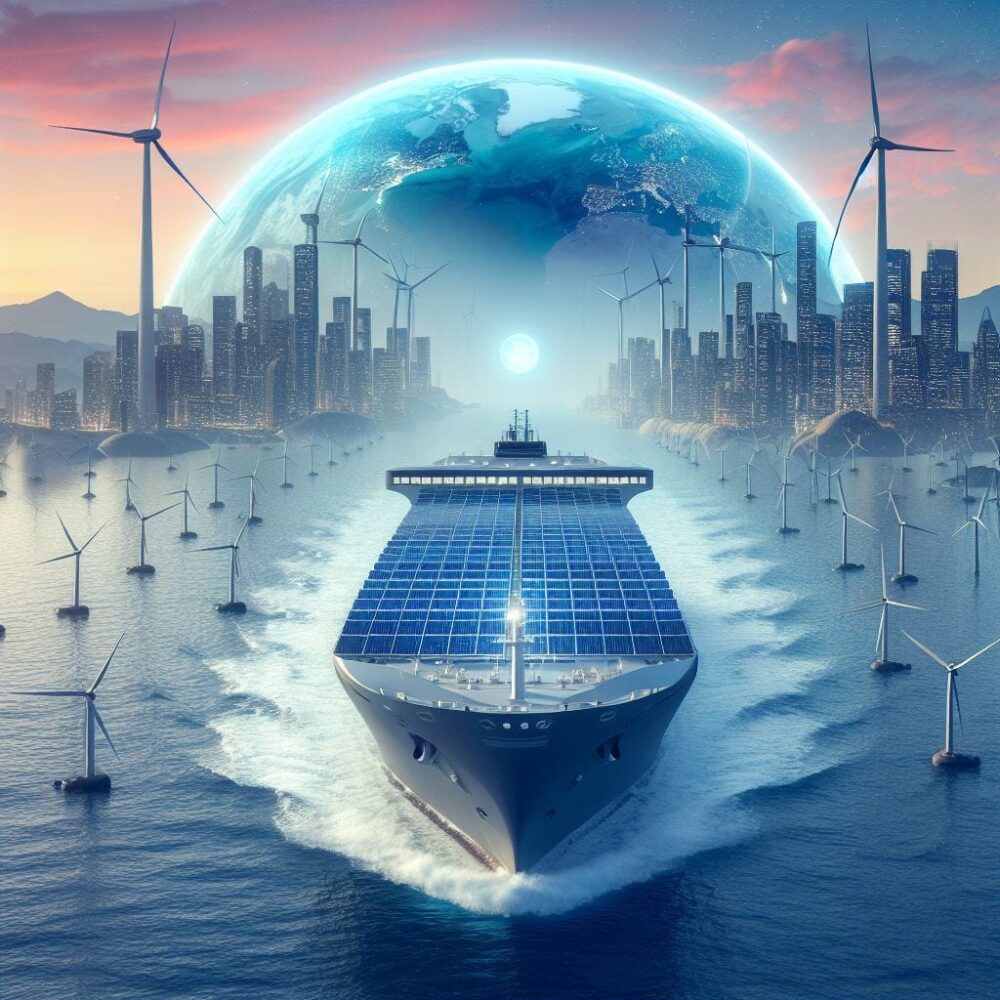The global shipping industry is under growing pressure to reduce its environmental impact. As one of the largest contributors to greenhouse gas emissions, the sector is being challenged to improve how it manages fuel, waste, maintenance and overall operations. For shipowners, operators and managers, this means rethinking day-to-day processes and making long-term changes that support both compliance and sustainability.

At the heart of this transition is ship management. Often operating behind the scenes, ship management companies are responsible for overseeing everything from crew operations and technical performance to maintenance, regulatory compliance and environmental reporting. As the industry adapts to climate targets and regulatory reforms, ship management practices are evolving to meet a new set of expectations around efficiency and sustainability.
Moving Beyond Compliance
Sustainability in ship management is no longer limited to meeting minimum legal requirements. While regulations like MARPOL, the IMO’s Carbon Intensity Indicator (CII) and the Energy Efficiency Existing Ship Index (EEXI) are driving change, many shipowners are choosing to go further. This includes implementing policies and practices that improve operational efficiency, reduce environmental impact and support longer-term ESG (Environmental, Social and Governance) goals.
Ship management companies play a key role in putting these ambitions into practice. From adopting cleaner fuels to modernising maintenance routines, sustainable ship management involves a broad set of changes that must be planned and executed carefully. These efforts go beyond compliance, they’re about creating more resilient, cost-effective and future-ready fleets.
Smarter Maintenance, Lower Emissions
A large part of a ship’s environmental footprint comes from how it is maintained. Hull fouling, worn parts and inefficient engine settings can all increase fuel consumption and emissions. Traditional maintenance schedules often rely on fixed intervals, which don’t always reflect a vessel’s actual condition.
Modern ship management teams are adopting predictive and condition-based maintenance. By using real-time data from sensors and onboard systems, they can monitor component wear, detect early signs of damage and carry out maintenance at the right time. This reduces waste, prevents breakdowns and keeps vessels running at peak efficiency.
These proactive strategies are especially important for emissions control. A clean hull and a well-maintained engine burn less fuel, reducing the ship’s carbon output without requiring major technological upgrades.
Sustainable Procurement and Lifecycle Thinking
Ship management isn’t just about keeping vessels running. It also involves decisions around procurement, spare parts, coatings and consumables. Choosing more sustainable materials and suppliers can reduce environmental impact across the vessel lifecycle.
For example, anti-fouling paints now come in environmentally friendly formulations that reduce biofouling without releasing harmful biocides. Energy-efficient lighting, low-emission lubricants and recyclable packaging are also becoming more widely used. These may seem like small changes, but they add up, especially across large fleets.
Lifecycle thinking also encourages managers to consider the long-term performance and environmental cost of equipment. This means investing in durable, repairable systems rather than opting for lower-cost items with shorter service lives.
Crew Training and Awareness
Sustainability also depends on the people running the ship. Crew members play a major role in daily operations, and their decisions can influence everything from fuel use to waste handling. That’s why ship management companies are placing greater focus on training and awareness programmes.
This includes guidance on fuel efficiency, proper waste segregation, ballast water management and energy-saving practices. Digital platforms can help deliver this training remotely, while onboard monitoring tools can provide feedback and encourage continuous improvement.
A well-informed crew can help reduce a ship’s environmental impact every day, simply by adjusting routines and being mindful of how systems are used. Training is also key for ensuring compliance with regulations and reducing the risk of human error in complex onboard systems.
Embracing Digital Tools
Digitalisation is a driving force behind more sustainable ship management. Cloud-based platforms, integrated monitoring systems and AI-powered analytics are helping managers make better decisions and improve transparency.
One example is voyage optimisation software. By analysing weather conditions, traffic, fuel availability and ship performance, these tools help plan more efficient routes. This reduces fuel burn and ensures better arrival planning, which in turn lowers emissions at port.
Digital record-keeping also makes it easier to track performance over time, submit environmental reports and demonstrate compliance with international standards. When everything from engine data to maintenance logs is available in one place, ship managers can respond quickly to issues and plan improvements with greater accuracy.
Supporting Decarbonisation Goals
Many shipowners are working towards long-term decarbonisation strategies, and ship management teams are responsible for putting those plans into action. This includes switching to alternative fuels like LNG, methanol or biofuels, as well as exploring hybrid and fully electric propulsion systems.
Retrofit projects are also on the rise. From installing energy-saving devices to adding wind-assist technologies, there are many ways to improve the environmental performance of existing ships. Ship management companies are involved in planning, coordinating and testing these upgrades to ensure they deliver the expected results.
With the IMO targeting net-zero emissions by 2050, the role of ship management in helping fleets reach those targets is only becoming more important.
Waste and Water Management
Sustainable ship management also involves reducing waste and managing water responsibly. This includes everything from limiting single-use plastics onboard to properly treating greywater and bilge water.
Ship management teams are responsible for implementing waste policies, checking that onboard systems are working properly and ensuring all discharges are in line with international law. Where possible, waste is separated, stored safely and disposed of at approved facilities when the ship is in port.
Improving waste and water management doesn’t just help the environment. It also reduces the risk of non-compliance, avoids fines and improves working conditions for the crew.
A Broader Industry Shift
The push for sustainability in ship management reflects a wider shift happening across the maritime industry. Clients, regulators and the public are all asking more of shipping companies, not just in terms of emissions, but also transparency, governance and environmental responsibility.
In response, many shipowners are restructuring operations, investing in digital transformation and building stronger partnerships with ship management providers who understand the new demands of sustainable shipping.
While every ship and fleet is different, the direction of travel is clear. Sustainability is no longer optional. It is now a fundamental part of safe, efficient and future-focused ship management.
Final Thoughts
Sustainable ship management is about more than checking boxes. It involves a wide range of changes that improve environmental performance while also creating stronger, more resilient fleets. From smarter maintenance to better waste management, every decision made on board or ashore has the potential to reduce impact and support global climate goals.
With regulations tightening and expectations rising, the shipping industry has an opportunity to set new standards for environmental performance. Ship management is central to that effort, helping vessels operate cleaner, crews work smarter and owners prepare for a greener future at sea.














